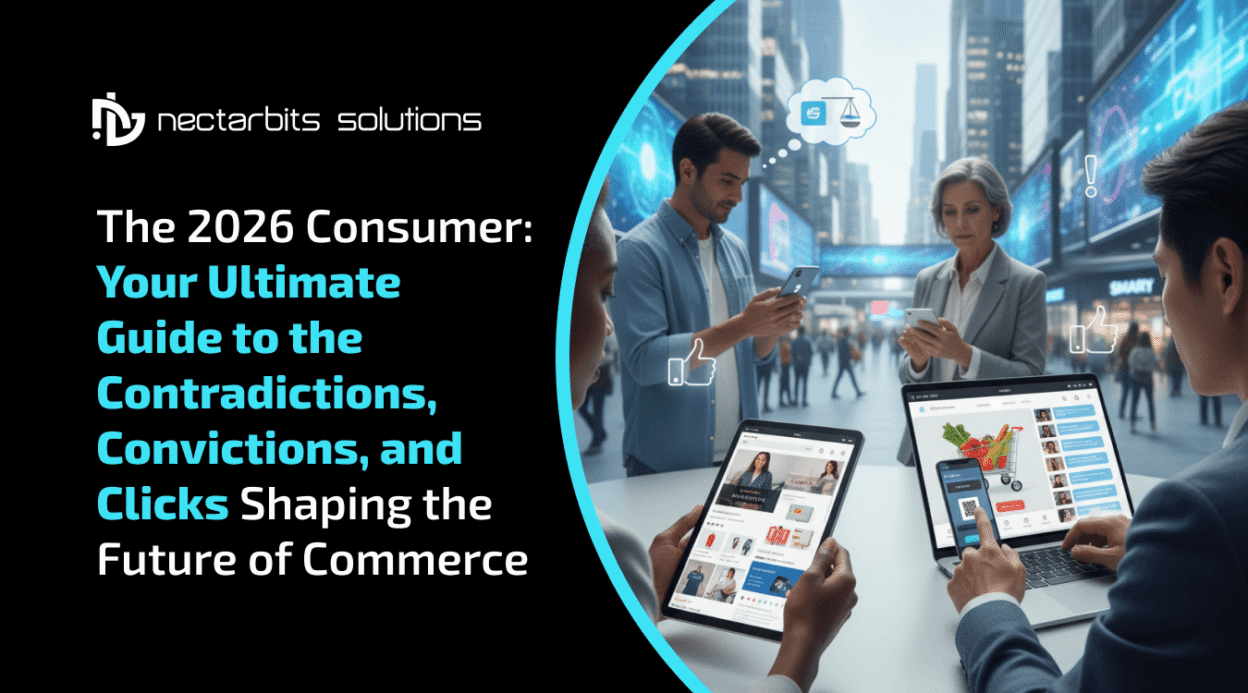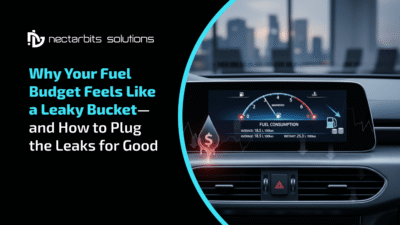The ground beneath the world of commerce is shifting. It’s not a slow, geological drift, but a series of seismic shocks, fundamentally reshaping the landscape of how we shop, what we buy, and why we choose one brand over another. The consumer of 2026 is emerging from this turbulence, a figure that would seem utterly baffling to the marketers of just a decade ago. They are a walking, talking bundle of contradictions: a privacy advocate who craves hyper-personalization, a deal-hunter with a taste for luxury, a digital native who yearns for authentic human connection.
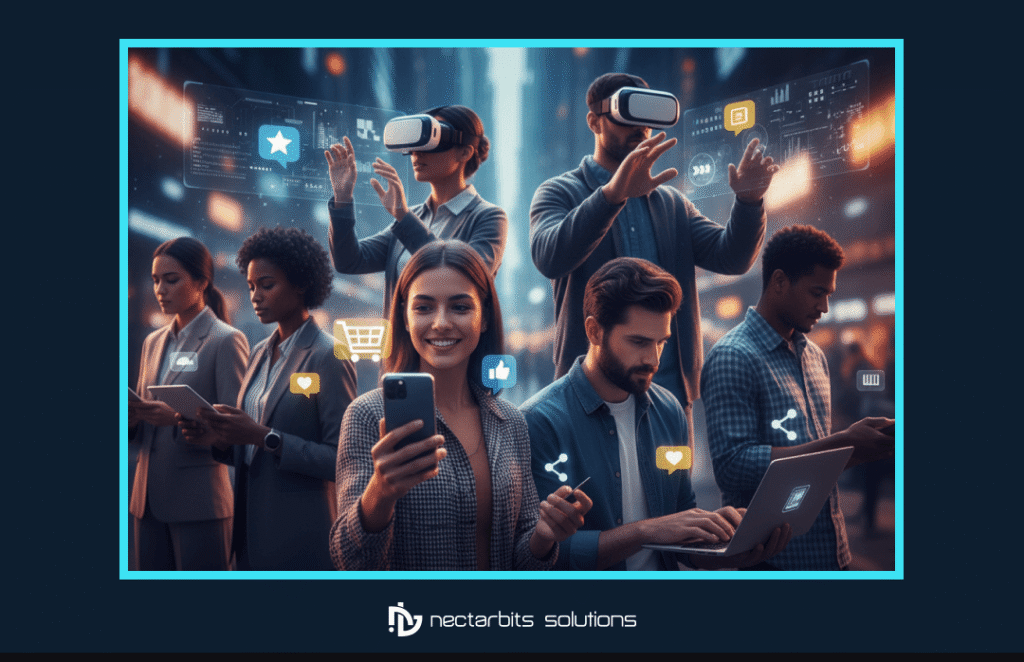
This isn’t just another trend report. This is a deep dive into the complex psychology of the future consumer. Understanding this evolution is no longer a competitive advantage; it’s a matter of survival. Food delivery app, for instance, has devoured a staggering 21% of global food service spending in 2024, a jaw-dropping leap from just 9% in 2019 [Source: Euromonitor]. Yet, this explosive growth is set against a backdrop of economic anxiety, with 62% of global consumers feeling pessimistic about their country’s economy
How can both of these realities exist at once? Because today’s shoppers are not just consumers; they are strategists. This guide will not only show you what’s happening but will provide you with the concrete case studies and actionable takeaways you need to prepare your business for the most disruptive and discerning customer base in history.
1. The 2026 Consumer Profile: Digital, Discerning, and Driven by Values
To understand the future, we must first understand the people who will shape it. The 2026 consumer is a complex tapestry woven from generational shifts, technological immersion, and a newfound sense of social consciousness.
A Generation Taking the Reins
The most significant force at play is the rise of Gen Z (born 1996-2010). Their digital-native perspective shapes their expectations for every interaction. A clunky website or a slow delivery isn’t just an inconvenience; it’s a reason to abandon a brand forever. This is why retailers offering same-day delivery now attract 82% more consumers. An estimated $68 trillion wealth transfer is set to cascade down from Baby Boomers, putting immense purchasing power into the hands of younger generations who prioritize experiences over possessions and sustainable brands over traditional incumbents.
The Primacy of Principles
Values-driven purchasing has officially graduated from a niche market to a mainstream expectation. Today’s consumers are voting with their wallets, and they are electing brands that stand for something more than just profit. A commanding 69% of consumers now gravitate towards brands that are committed to socially conscious causes
Case Study: Patagonia’s Value-Driven Empire
Patagonia has built its brand on an unwavering commitment to environmentalism. Their famous “Don’t Buy This Jacket” campaign on Black Friday was a masterclass in appealing to the values-driven consumer. By urging people to consider the environmental cost of consumption, they paradoxically generated immense brand loyalty and attracted customers who were proud to be associated with their mission. This reinforced their authenticity in a market full of empty promises.
Actionable Takeaways for Your Business:
- Define and Live Your Values: Don’t just write a mission statement. Audit your supply chain, highlight your ethical practices, and take a genuine stand on social issues that align with your brand. Consumers will see through inauthenticity.
- Invest in Seamless Convenience: Optimize your mobile app development checkout process to be as frictionless as possible. Explore partnerships with last-mile delivery services to offer faster, more reliable shipping options.
- Build a Community, Not Just a Customer List: Encourage and feature customer reviews and user-generated content. Create spaces (like a Discord server or a private Facebook group) where customers can connect and help each other, fostering a sense of shared identity.
2. The Seamless Storefront: Shopping Becomes Social and Omnipresent
The traditional, linear path to purchase is officially dead. In its place is a dynamic journey that weaves across platforms and realities. The boundaries between discovery, entertainment, and transaction have completely dissolved.
The Social Commerce Surge
By 2026, it’s projected that over 17% of all online sales will happen directly through social platforms. This isn’t just about “buy” buttons; it’s a fundamental reimagining of retail, powered by the creator economy.
A staggering 91% of consumers aged 16-24 have purchased a product founded by a creator, showing that trust is shifting from legacy brands to authentic individuals.
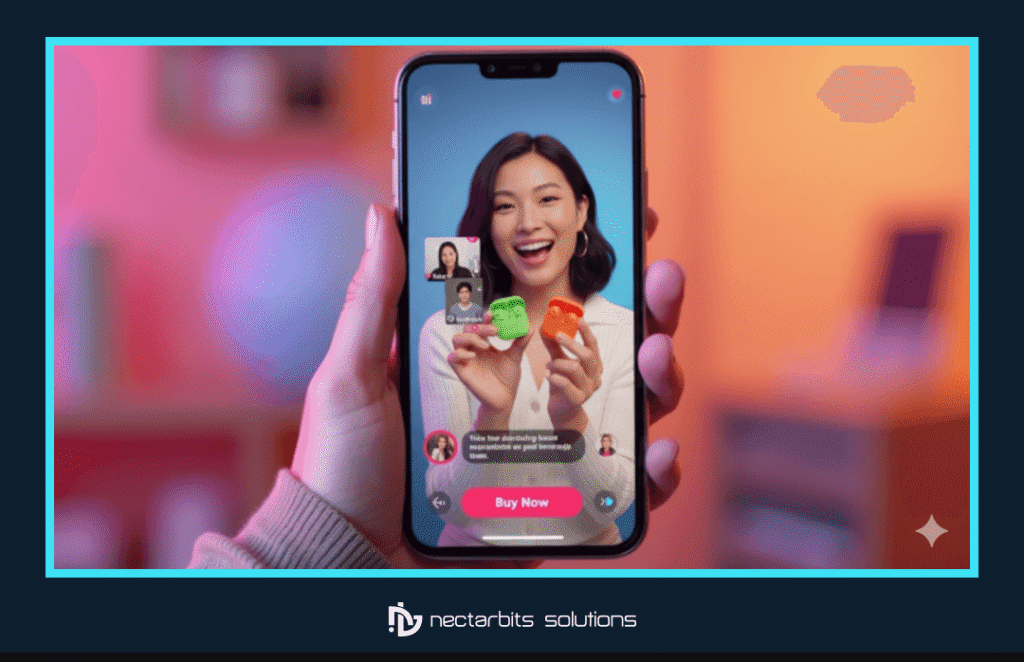
Case Study: Glossier’s Community-First Approach
Glossier didn’t start as a beauty brand; it started as a blog, “Into the Gloss.” Founder Emily Weiss built a massive, engaged community first. She listened to what they wanted, featured real customers in her marketing, and used social media as a two-way conversation. By the time Glossier launched its first products, it already had a legion of loyal fans ready to buy and promote them. They proved that a brand built from a community is far more powerful than one that simply markets to one.
Actionable Takeaways for Your Business:
- Activate On-Platform Selling: Don’t use social media just to redirect traffic. Set up Instagram Shopping, TikTok Shop, and Pinterest Product Pins to allow for in-app purchases and capture customers at the peak of their interest.
- Partner with Micro-Influencers: Instead of one expensive celebrity, partner with several smaller creators who have highly engaged, niche audiences. Their recommendations often carry more weight and deliver a better ROI.
- Bridge the Digital-Physical Gap: Use your social channels to promote in-store events or exclusive “Buy Online, Pick Up In-Store” (BOPIS) offers. Use your physical store as a backdrop for live streams or content creation.
3. The Personalization Paradox: AI, Data, and the Quest for Trust
Artificial intelligence is the engine powering the next wave of commerce, with Generative AI-driven recommendations shown to increase conversion rates by up to 70%. But this power comes with a profound challenge: the personalization paradox.
While 64% of consumers express a genuine desire for tailored experiences, only 41% believe the benefits are worth the cost to their privacy, creating a deep trust gap that brands must bridge.
Case Study: Sephora’s Mastery of the Value Exchange
Sephora’s “Beauty Insider” loyalty program is a brilliant example of ethical data collection. In exchange for their purchase history and personal preferences (zero-party data), customers receive tangible value: points, free birthday gifts, and exclusive access to sales. This transparent value exchange makes customers want to share their data because they see a direct benefit. Sephora then uses this data to power its hyper-personalized recommendation engine, creating a virtuous cycle of loyalty.
Actionable Takeaways for Your Business:
- Prioritize Zero-Party Data: Use interactive quizzes (“Find Your Perfect Skincare Routine”), surveys, and preference centers to ask customers directly what they want. Data that is voluntarily given is the most valuable and trustworthy.
- Be Radically Transparent: Create a simple, easy-to-understand privacy policy. Use clear language at every data collection point to explain how you will use that information to improve their experience.
- Give Customers Control: Ensure users can easily access, edit, and delete their data. Putting the customer in the driver’s seat is the fastest way to build the trust required for effective personalization.
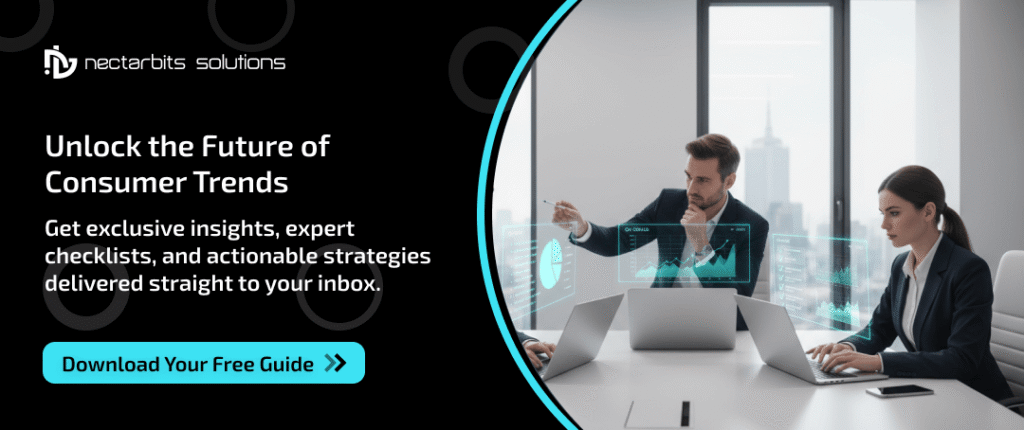
4. The Subscription Society: From Ownership to Access
The subscription economy has rewritten the rules of consumer spending and is projected to become a $1.5 trillion market by 2025. This model turns one-time purchases into predictable, recurring revenue.
The Unseen Drain on Our Wallets
The convenience of auto-pay has created a significant psychological blind spot.
While the average consumer estimates they spend around $86 per month on subscriptions, detailed analysis reveals the actual figure is closer to $219—a monthly overspend of $133 that goes completely unnoticed.
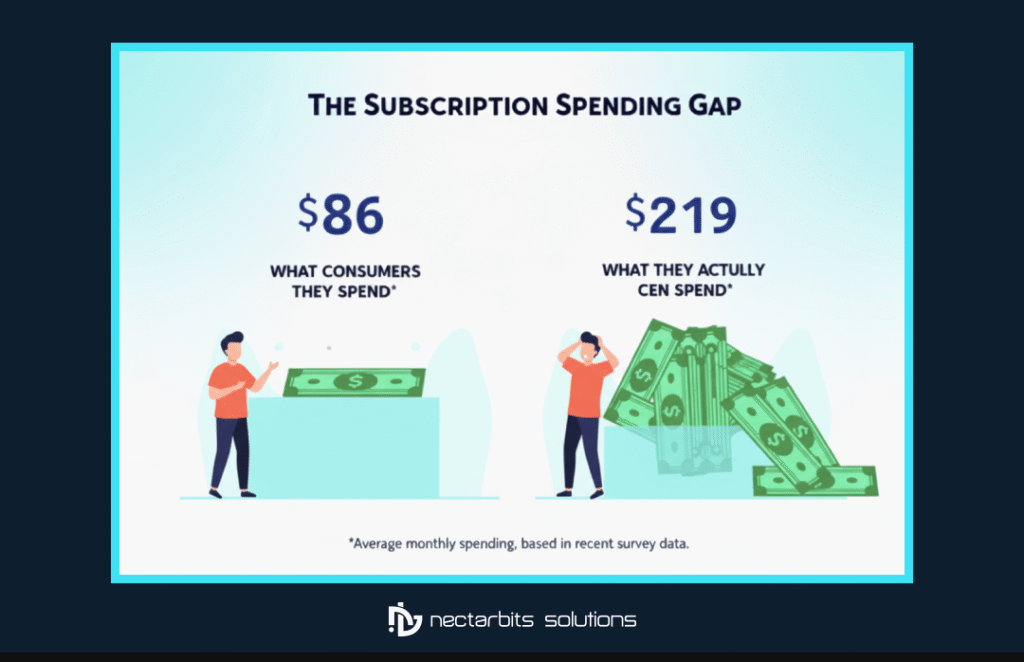
Case Study: The Disney Bundle’s Answer to Fatigue
Facing a crowded streaming market and growing “subscription fatigue,” Disney made a strategic move. Instead of just selling Disney+, they bundled it with Hulu (for general entertainment) and ESPN+ (for sports). This single-billing solution offered immense value and catered to multiple interests within a household, successfully locking in millions of subscribers and making their offer far “stickier” than any single service alone.
Actionable Takeaways for Your Business:
- Focus on Engagement to Reduce Churn: A subscription is a relationship. Continuously provide value through new content, exclusive perks, community features, and newsletters that remind users why they subscribed in the first place.
- Explore Bundling and Partnerships: Partner with non-competing brands that serve a similar audience to create a bundled offer. This can increase the perceived value and expand your reach.
- Offer Flexibility: Allow customers to easily pause their subscription or switch between different tiers. This flexibility can prevent an outright cancellation when a customer’s financial situation or needs change.
5. Health, Wellness, and the Home Ecosystem
The home has become the new epicenter of health. Consumers are building sophisticated wellness ecosystems, and the market is exploding. The global market for sleep tech devices alone is expected to reach $68.8 billion by 2032
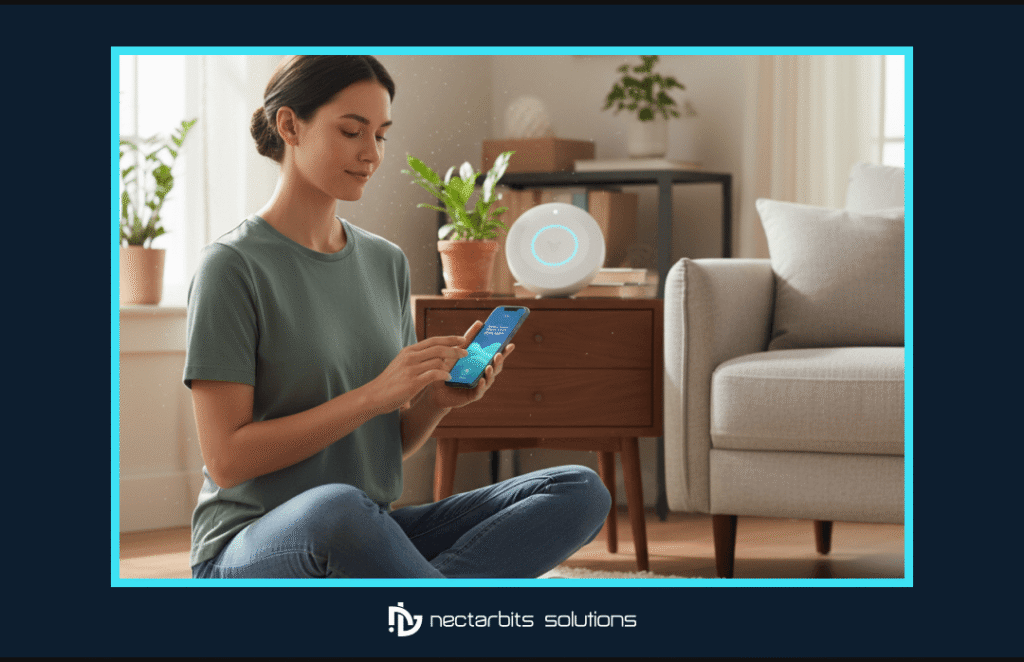
Case Study: Peloton’s At-Home Revolution
Peloton didn’t just sell an exercise bike; it sold an entire at-home wellness ecosystem. It combined high-end hardware with a subscription to elite fitness classes and a powerful community platform where users could compete and encourage each other. By bringing the energy of a studio class into the living room, Peloton perfectly captured the consumer desire for convenient, tech-driven, community-oriented wellness.
Actionable Takeaways for Your Business:
- Integrate Wellness into Your Brand Story: Even if you don’t sell health products, you can align your brand with wellness. Emphasize how your product saves time, reduces stress, or brings joy—all key components of modern wellness.
- Leverage the Power of Community: Whether you sell fitness equipment or craft supplies, creating a platform for users to share their progress and connect with others can dramatically increase engagement and brand loyalty.
- Highlight Convenience and Control: Frame your products and services as tools that empower consumers to take control of their well-being on their own schedule, from the comfort of their home.
6. The Strategic Spender: Navigating the New Economic Reality
Economic uncertainty has not simply stopped spending; it has made consumers smarter. This has created a new archetype: the strategic spender.
Over a third of shoppers are now actively ‘trading down’ in certain categories—choosing a store brand for pantry staples, for example—to free up money to ‘splurge’ in categories they are passionate about.
Case Study: ALDI’s Appeal to the Strategic Shopper
The entire business model of the grocery chain ALDI is a masterclass in catering to the strategic spender. With a no-frills store experience, a focus on high-quality private label products, and extreme operational efficiency, ALDI allows consumers to save significantly on their grocery bills. They don’t compete on massive selection; they compete on providing exceptional value, which frees up their customers’ budgets to spend on other priorities.
Actionable Takeaways for Your Business:
- Offer “Good, Better, Best” Options: Introduce product tiers that allow customers to choose the price and feature set that works for them. This allows you to capture both the “trade-down” and “splurge” mentalities.
- Communicate Long-Term Value: Shift your marketing message from price to value. Highlight durability, cost-per-use, and the time-saving benefits of your product. Show that a higher upfront cost can be a smarter long-term investment.
Integrate Flexible Payments: Implement Buy Now, Pay Later (BNPL) options like Klarna or Afterpay at checkout. This removes financial friction and makes higher-priced items more accessible to budget-conscious shoppers.
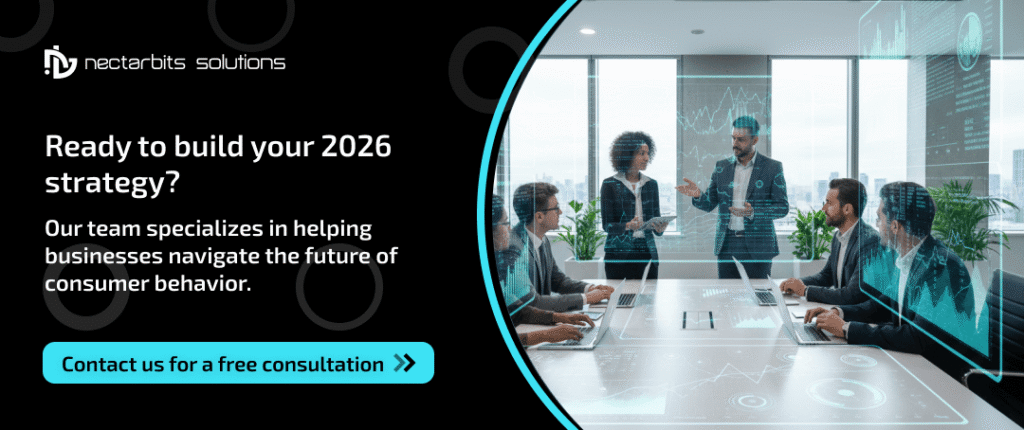
What To Do Next: Preparing for 2026
The consumer of 2026 is not a puzzle to be solved, but a dynamic partner to be understood. The brands that thrive will not be those that see these trends as obstacles, but as a roadmap for building deeper, more authentic relationships. They will embrace the contradictions—delivering data-driven personalization through radical transparency and building global digital communities with a human touch.
The future of commerce belongs to the brands that are agile, authentic, and obsessed with providing genuine value. Whether you’re developing custom software development solutions, creating mobile app development services, or building saas application development platforms, understanding these consumer shifts is essential for creating products that resonate with tomorrow’s marketplace.
(FAQs)
1. How is consumer behavior in 2026 different from today?
2026 consumers are digital natives who value convenience, personalization, and social responsibility. They expect fast, seamless experiences from apps and platforms while carefully guarding their privacy. Businesses must adapt to these expectations to stay relevant.
2. Why is personalization important, and how can it be done ethically?
Personalization drives engagement and loyalty, but privacy concerns are high. Collect zero-party data through surveys, quizzes, or preference settings, and use it transparently to offer tailored recommendations and promotions.
3. What role do subscriptions play in consumer behavior?
Subscriptions are reshaping spending habits, creating predictable revenue but also “subscription fatigue.” Offering flexible tiers, bundled services, and clear value helps businesses retain customers and reduce cancellations.
4. How can mobile apps meet the needs of 2026 consumers?
Consumers demand fast, intuitive, and socially integrated apps. Features like one-click checkout, AI-driven recommendations, and in-app purchases enhance convenience while maintaining user trust through transparency and security.

